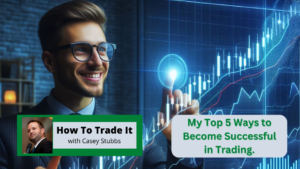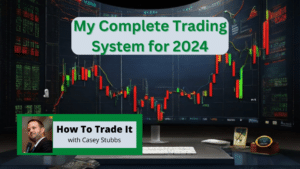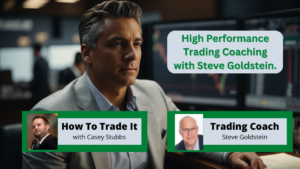In The Money Stocks with Gareth Soloway, Ep #92

Gareth Soloway is a Pro Trader who has been trading for himself, consulting for Hedge Funds, and guiding retail investors for over 20 years. After building his personal wealth through trading in 2004, he left the financial industry to trade his own money exclusively. This is when he met his partner Nick, on a trading floor in NYC. Magic was made at that time as the two top traders put their collective brain-power together to co-found the PPT Methodology. In 2007 they formed InTheMoneyStocks.com with the purpose of teaching those willing to learn how to use their PPTMethodology to dominate the markets and beat the best hedge funds and traders on Wall Street. Since 2007, Gareth has maintained an over 80% success rate on swing trades (verified with 300+ documented trades per year) in his Verified Investing Alerts, and a verified 94% success rate on day trades in his Live Day Trading Room. Gareth gives lectures at colleges, trains hedge fund traders and 1000s of investors. Gareth’s analysis is featured all over the world and by the most trusted financial media outlets. In this episode of How To Trade It, Gareth shares lots of practical, technical trading advice. You don’t want to miss it!
@GarethSoloway has maintained an over 80% success rate on swing trades (verified with 300+ documented trades per year) in his Verified Investing Alerts. Join us on this episode of How To Trade It to find out more! #StockMarket #SwingTrade… Click To Tweet
Subscribe to How To Trade It
[maxbutton id=”3″][maxbutton id=”4″][maxbutton id=”5″][maxbutton id=”6″]
You’ll want to hear this episode if you are interested in…
- [02:12] Gareth’s trading strategy
- [04:50] How probabilities give you an advantage
- [06:54] How to get started
- [09:33] Traits of a good trader
- [11:58] Investing vs. trading…which is better?
- [17:00] Paying for education
- [19:12] How to find great trades
- [24:04] When to exit a trade
Getting Started!
From personal experience, Gareth suggests starting your trading journey very slowly. You are in shark infested waters when you jump into the markets! Institutions pay millions of dollars for algorithms to try to push you and your emotions to the extreme to get you to do the opposite of what they want to do. Then they take your money. The first thing you need to do is get educated. Then you start by trading one share of a stock. If, after a month, you are trading 45 out of 50 winning trades, you can move to trading five stocks. Then prove to yourself again that your methods are right and effective. And move slowly up from there. What investors really need to understand is that emotions are one of your biggest issues. Get those emotions in check right from the beginning. By purposely moving slowly, and testing yourself, you will instill the essential habit of discipline.
Investing vs. Trading?
Which is better is going to depend on your ability. The average investor will make more money buying and holding stocks long-term. If you want to make more trading, you must have the time to devote to the process of studying the charts. Your mentality will also need to be considered. If you are a risk-taker, who also lacks discipline, you could end up underperforming. Sometimes taking less trades ends up making you more profit because you have learned to be selective in terms of the trades you are taking.
Resources & People Mentioned
Connect with Gareth Soloway
- Website: http://inthemoneystocks.com
- Twitter: https://twitter.com/GarethSoloway
Connect With Casey Stubbs
- Website: https://caseystubbs.com
- YouTube: https://www.youtube.com/TradingStrategyGuides
- YouTube: https://www.youtube.com/caseystubbs
- Twitter: https://www.twitter.com/caseystubbs
- Facebook: https://www.facebook.com/TradingStrategyGuides
- LinkedIn: https://www.linkedin.com/in/caseystubbs/
Subscribe to How To Trade It
Disclaimer: Trading carries a high level of risk, and may not be suitable for all investors. Before deciding to invest you should carefully consider your investment objectives, level of experience, and risk appetite. The possibility exists that you could sustain a loss of some or all of your initial investment. Therefore, you should not invest money that you cannot afford to lose. You should be aware of all the risks associated with foreign exchange trading, and seek advice from an independent financial advisor if you have any doubts.







